Paragonís Wilderness Ditch Kit (Continued)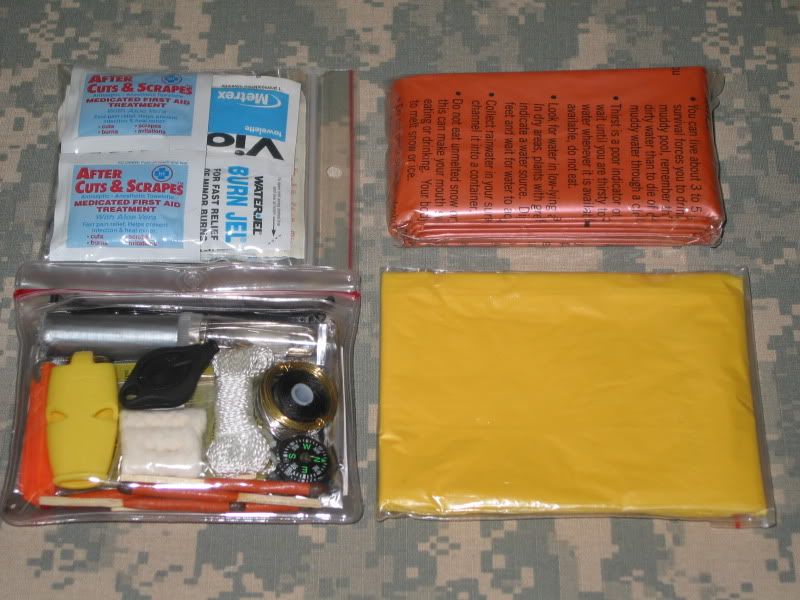
Hereís the Ritter PSP alongside my mini FAK, 2-person heatsheet, and Coghlanís rain poncho. The Coghlanís brand poncho is a good compromise for a small kit such as this, falling somewhere between those cheap disposable ponchos and the more durable, light duty rain gear.
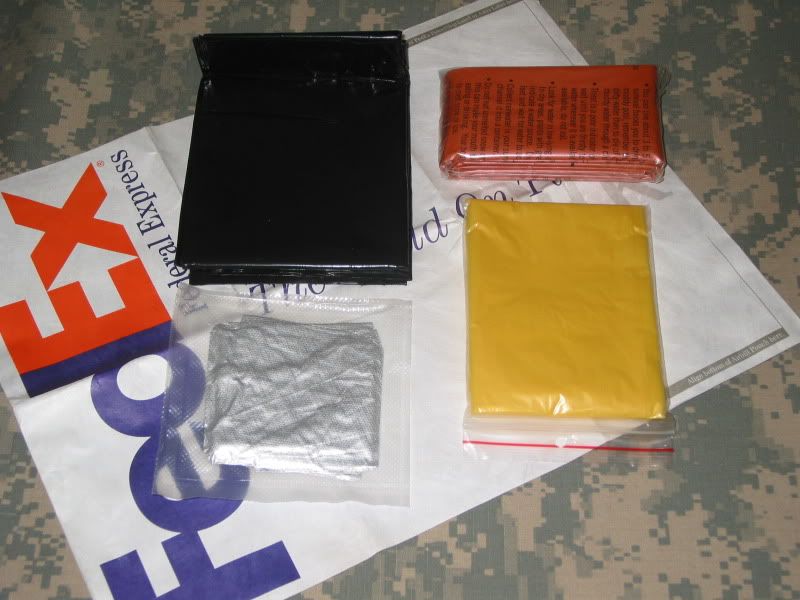
Hereís another shot of my shelter and personal protection gear, this time showing the large trash can liner (36Ē x 84Ē) and AMK Thermo-Lite hypothermia prevention cap. Iíve filled these trash can liners with leaves in the past to serve as an insulated ground cover, slit the edge/bottom to improvise a 6í x 7í tarp, and even cut a hole in the liner to make a rain poncho. When used as a poncho, the liner is so large you actually have to trim several feet off the bottom to keep from tripping on it.
You might be wondering about the FedEx Tyvek envelop. Iíve stuffed these with leaves before to make an improvised pillow, used them to collect kindling for a fire, and even carried almost a gallon of water in one once, but perhaps the most useful role is as a waterproof ďmouse tarpĒ to sit on.
One of the more tiring aspects of being in the wilderness for me has always been standing around instead of sitting down when I stop to rest, due to everything being damp or filthy. Although it obviously wouldnít be the end of the world to get your butt wet by sitting down on a damp log, for me itís more a matter of dying a death from a thousand cuts. I believe that almost anything that I can do to remain more comfortable in a potential survival situation will go a long way towards maintaining my morale, and thus my will to survive.
Not shown in this photo is my bandana -- actually a 12-in-1 multifunction buff (the blue item in the mesh pocket shown in the first photo above). Also in there is a Cool Downzô cooling head/neck band for the hot, humid North Carolina summers.

Although this FAK is quite small (4Ē x 4Ē) itís actually very comprehensive. While certainly not a trauma kit by any means, it does a very good job of cleaning and treating most minor injuries. The full content list is shown below.

This waterproof vial contains various OTC and Rx medications. Also shown is a small Ziploc bag containing three multi-vitamins. Vitamins are always a good idea, but are especially important during a 3-day survival scenario where caloric intake is extremely limited.

Although the need for food over a three day period is arguably unnecessary, I choose to add a couple of small packages of MRE peanut butter simply as a moral booster. For itís size (1.5 oz) youíre unlikely to find anything with more calories (250) or protein (10g), and being able to put something tasty in your stomach other than bugs and worms at the end of the day make it worthwhile for me. Again, the quarter is shown for scale.
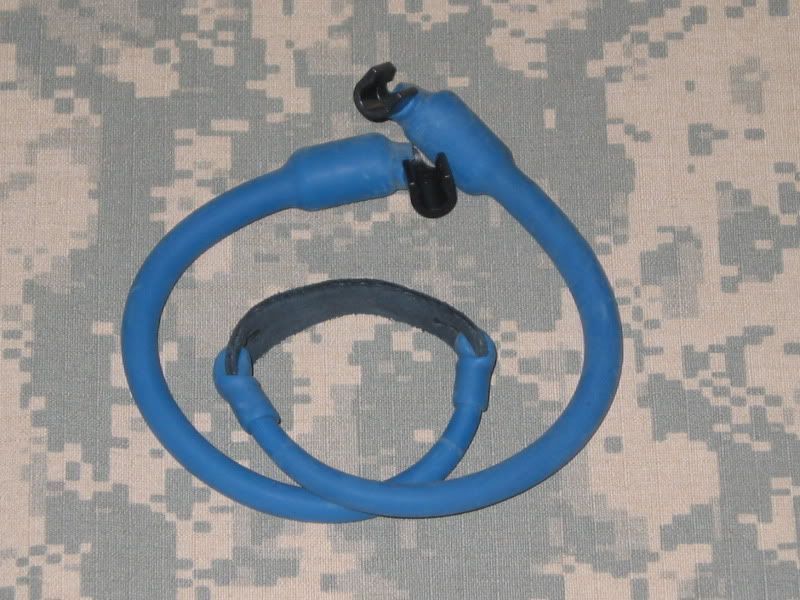
In addition to the fishing kit and brass snare wire in the PSK, Iíve added a sling shot band as a means to improvise a small weapon that could be used to kill game. It would be pretty unusual for me to ever find myself in a situation without my Glock 27, and Iím not sure how accurate I would be with fabricated sling shot, but in a pinch it would be better than nothing.
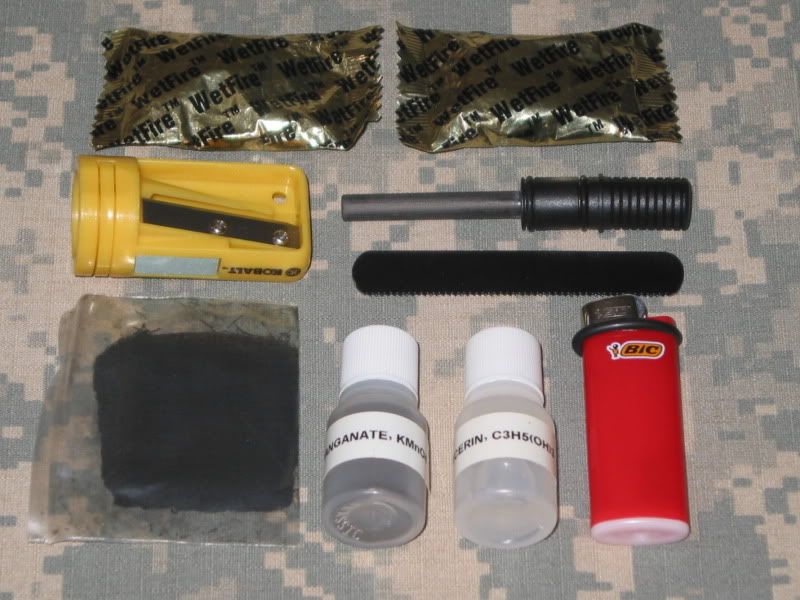
The small vials of potassium permanganate and glycerin in my fire kit contain enough material to start 2-3 fires. Although it might seem a bit overkill to start a fire in this manner, itís very reassuring to know that I have the ability to start a fire in anything short of a Cat-5 hurricane. Both of these chemicals have numerous other practical uses in a survival kit, so the decision to carry them is a no-brainer for me.
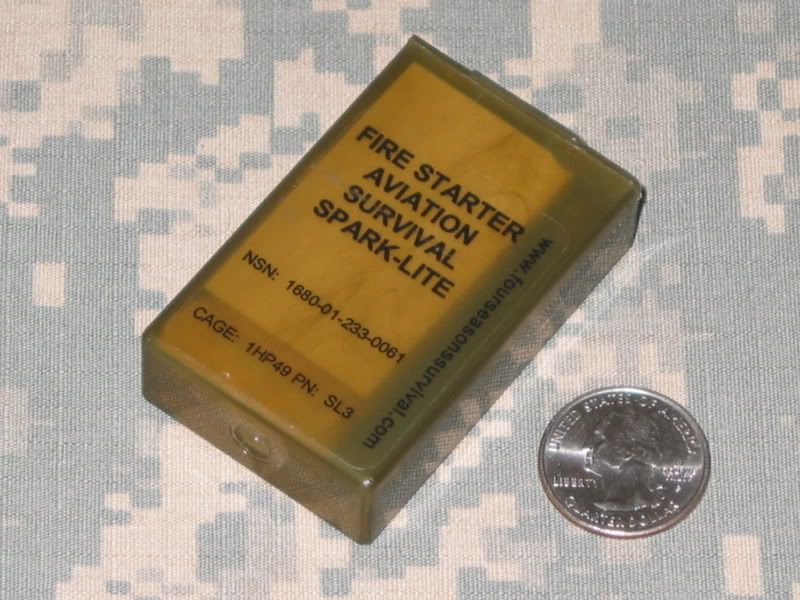
Until very recently I had always carried an Aviation Spark-Liteô in this kit, although looking more closely at everything the other day, I decided that as important as fire is, and redundancy is a necessity, I felt that I was simply carrying way too much within this one category.
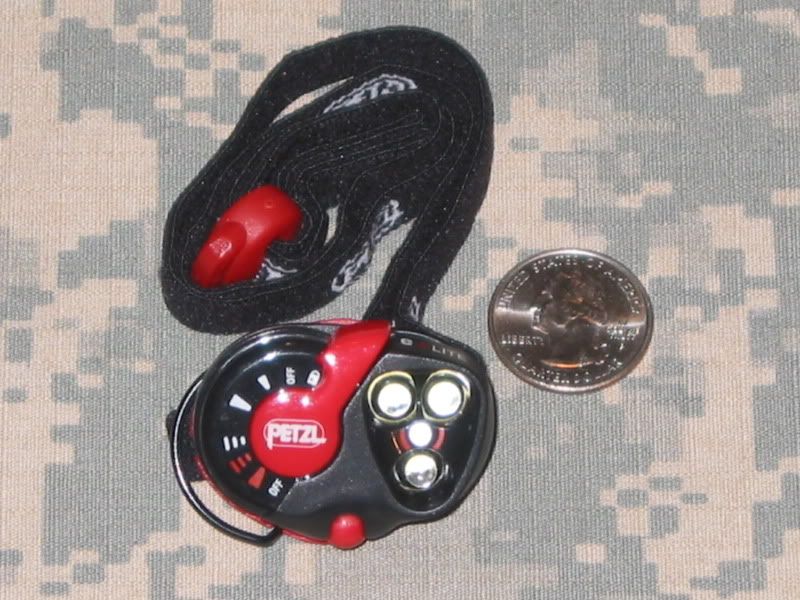
I have several Petzl e-LITEs, so thereís no way I wasnít going to include one in the kit as well. Headlights are a bit like knives Ė everyone has their favorite Ė but the e-LITE is pretty hard to beat, and is one of the smallest lights available.
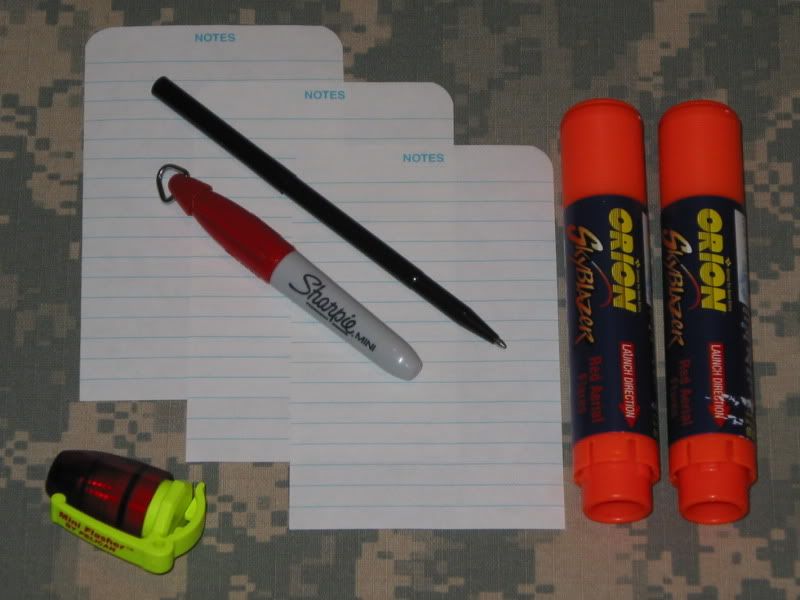
My signaling and navigation items include a Pelican LED strobe that is clipped to the shoulder strap, 3 sheets of weatherproof paper (there are also two smaller sheets in the PSK), Fisher space pen, Sharpie permanent marker, and the two aerial flares. Not shown in this picture is a Rescue Flash signal mirror and Fox 40 whistle that is stored in the PSK.
My initial feelings regarding the flares was somewhat mixed, as the intent of this kit is to allow me to be more self-reliant, rather than dependent upon a SAR team to bail me out if I were to get in over my head. However, there are enough really bad things that can happen to anyone in the wilderness that would make me wish I had them, so given their size, I decided to carry them. One could make a pretty strong case that Aron Ralston would probably still have both his arms had he had an effective means to signal rescuers.
Continued Below...